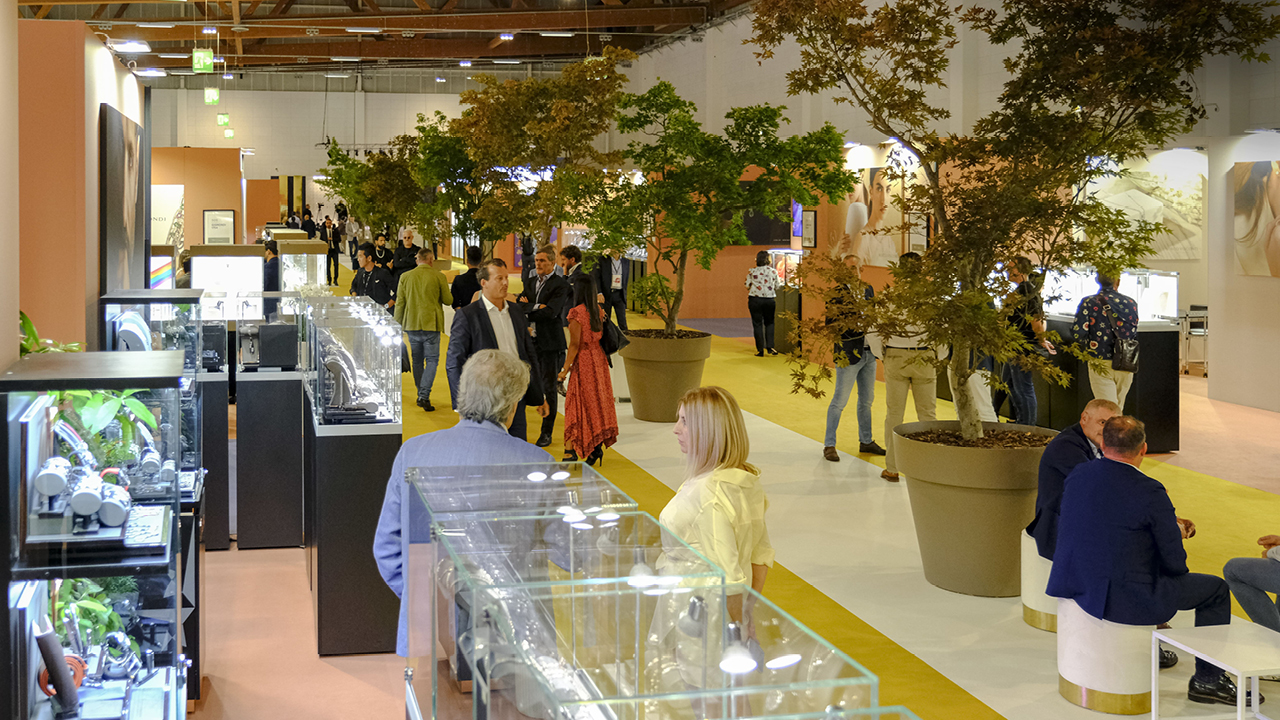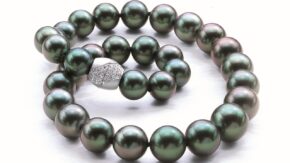Strong visitor traffic, a leap in lab-grown, and a burst of colored-gem styles characterized the Vicenzaoro show last month.
The latest edition of the Vicenzaoro trade fair saw high visitor turnout, a sign that the recent surge in Italy’s fine-jewelry exports would likely continue. Buyers from across the Americas, benefiting from the US dollar’s strength against the euro, joined the rising influx of visitors to the event, which ran from September 9 to 13. There were over 1,000 exhibitors, and attendance was up 10% from 2019’s edition.
The twice-yearly show in the Italian town of Vicenza is a major conduit for the country’s jewelry exports. Those have been doing well this year; gold and silver jewelry exports were up 37% year on year for the first five months of 2022, coming to just under EUR 4 billion, according to goldsmiths’ group Federorafi. The US maintained its position as the number-one market, with Switzerland and the United Arab Emirates (UAE) coming in second and third.
One reason for the jump in exports is consumers’ increasing taste for branded fine jewelry, according to Giorgio Villa, who heads Italian goldsmiths’ group Club degli Orafi. High-end brands such as Roberto Coin, which exhibited at the show, have been strong performers in the US market.
Lab-grown diamonds were more prevalent than usual at exhibitor stands, notably in the Indian pavilion. Surat’s manufacturing capacity for synthetics has been expanding in response to rising demand in the US and Europe. In fact, around a quarter of engagement rings selling in the US feature lab-created stones, said Hearts on Fire CEO Rebecca Foerster during a panel session. Rising inflation and squeezed incomes have heightened the appeal of lab-grown jewelry, as it is more affordable; synthetic-diamond prices have fallen due to increasing supply, jewelers noted.
Meanwhile, manufacturers exhibiting at the Indian pavilion spoke of a shift to more lightweight gold jewelry designs due to the yellow metal’s high prices. Production has moved more toward 9-karat gold instead of 18-karat.
In the middle market, some manufacturers are turning to colored gems instead of natural diamonds — particularly semiprecious stones such as blue topaz and tourmalines — to keep price points accessible. White sapphires can sometimes be a stand-in for natural white diamonds, manufacturers said.
On the design front, there has been an “explosion of color,” reported jewelry analyst Paola De Luca in a presentation.
Green stones that are symbolic of nature — such as malachite — are highly popular in silver jewelry at the lower end of the market, where consumers’ budgets have been under the most pressure from the cost-of-living crisis that the Russia-Ukraine war has caused.
Overall, the bustling traffic at the show augured a strong flow of orders for diamond, gemstone, gold and silver designs, boosting optimism for the Italian jewelry trade.
Image: Vicenzaoro



